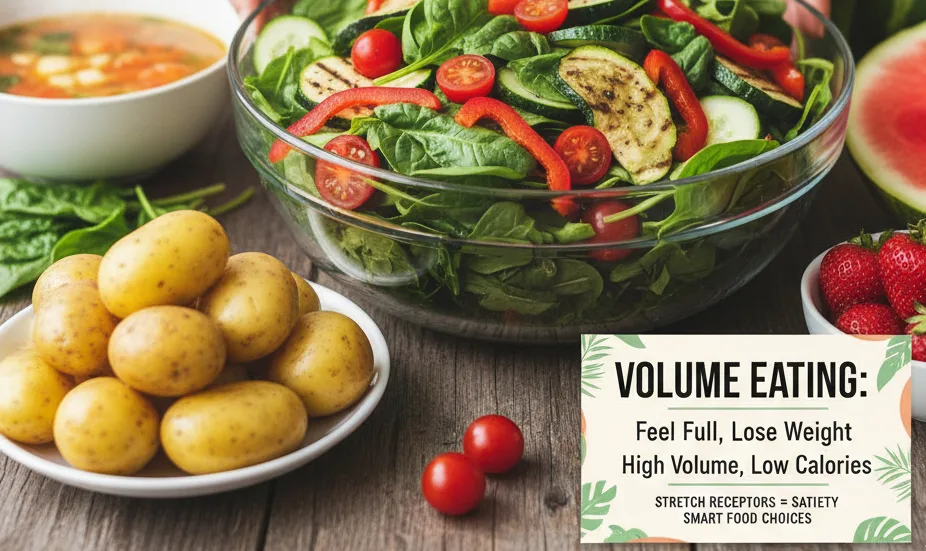In the world of fitness and nutrition, we often hear about the importance of "exercise selection" – choosing the right movements to optimize muscle growth and strength. But what if we applied a similar strategic approach to our diet? Just as specific exercises yield better results, strategic food selection can be a powerful tool for more effective weight loss.
The key lies within our own digestive system, specifically in fascinating mechanisms known as stretch receptors.
Understanding Your Body's Built-In Satiety System
Deep within the walls of your stomach and intestines are specialized receptors that are exquisitely sensitive to physical distension – in other words, to your stomach stretching as it fills with food. When these receptors are activated, they send powerful signals to your brain, communicating a crucial message: "I'm full. Stop eating."
Think of it like a natural "stop" button for your appetite. The more these receptors are stretched and activated, the stronger the signal of satiety (fullness) your brain receives.
The Power of Volume Eating for Weight Loss
This biological insight offers a game-changing strategy for anyone looking to manage their weight without constant hunger: volume eating.
The principle is simple yet profound: the more physical volume your food occupies in your stomach, the more those stretch receptors are activated, and the stronger the sensation of fullness you'll experience.
This means you can consume a significant amount of food, feel genuinely satisfied, and yet still consume fewer calories overall, leading to sustainable weight loss. Your body receives the signal that "there's no more room," naturally curbing your desire to eat further.
How to Implement Volume Eating in Your Diet
The goal is to prioritize foods that are naturally high in volume but low in caloric density. These foods typically have a high water content and/or a high fiber content.
Here are some excellent examples of high-volume, low-calorie foods to incorporate into your meals:
-
Vegetables: Leafy greens (spinach, lettuce, kale), cucumbers, celery, broccoli, cauliflower, bell peppers, zucchini, mushrooms.
-
Fruits: Watermelon, cantaloupe, strawberries, blueberries, oranges, grapefruit, apples.
-
Starches (in moderation): Boiled potatoes (as highlighted in the original text), sweet potatoes, oats.
-
Lean Proteins: Chicken breast, turkey, white fish.
-
Soups: Broth-based soups with plenty of vegetables.
A Practical Example: The Boiled Potato
As the original message pointed out, a simple boiled potato is a fantastic example. While often unfairly demonized, boiled potatoes are surprisingly low in calories for their filling volume, especially when consumed without excessive butter, oils, or heavy toppings. They provide satisfying carbohydrates and fiber, helping to stretch those receptors and keep you feeling full for longer.
Making Smart Food Choices Your Priority
Embracing volume eating is one of the most effective strategies you can adopt for successful weight management. It shifts the focus from strict calorie restriction (which often leaves you feeling hungry and deprived) to intelligent food selection that works with your body's natural satiety mechanisms.
By consciously choosing foods that offer a high volume-to-calorie ratio, you empower yourself to feel satisfied, energetic, and in control of your dietary journey, making sustainable weight loss not just possible, but enjoyable.

